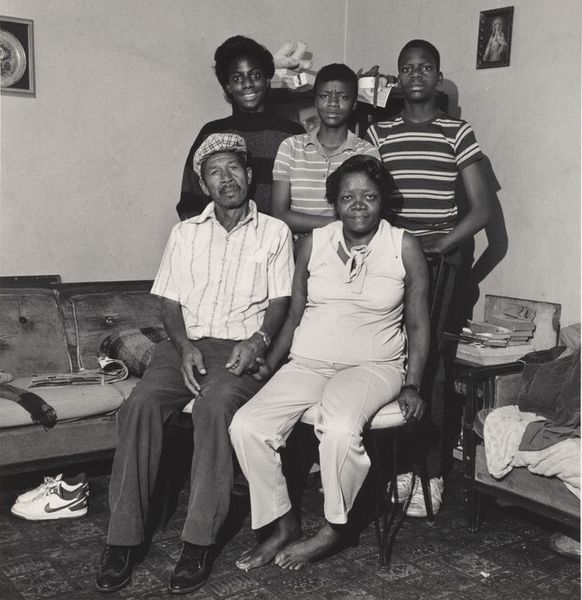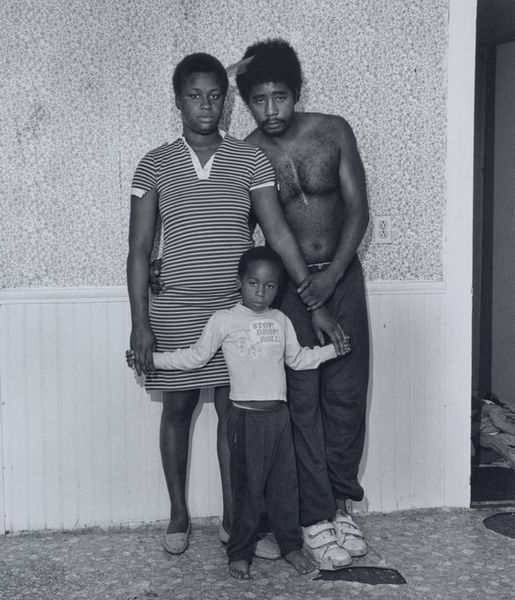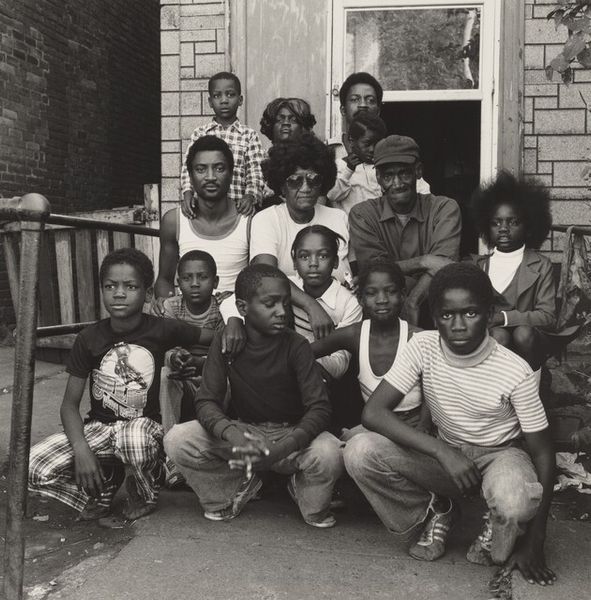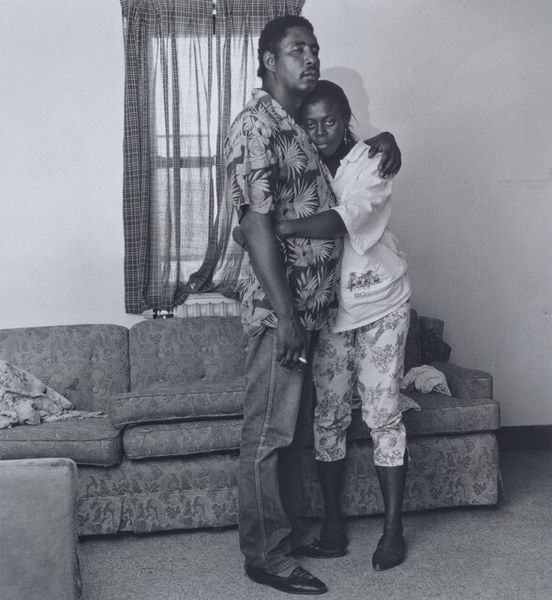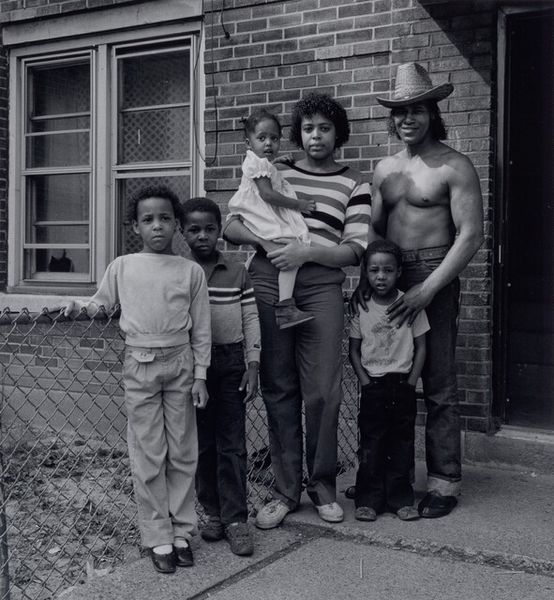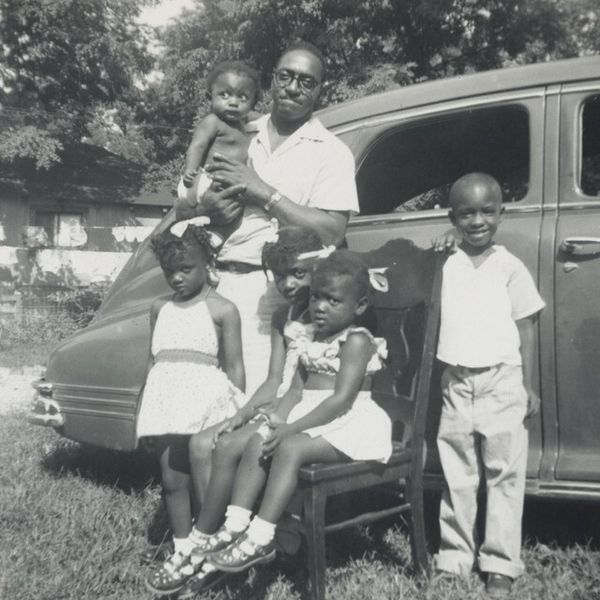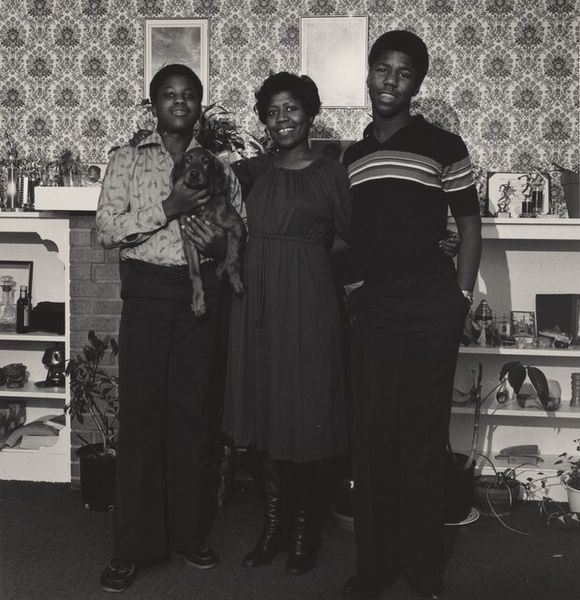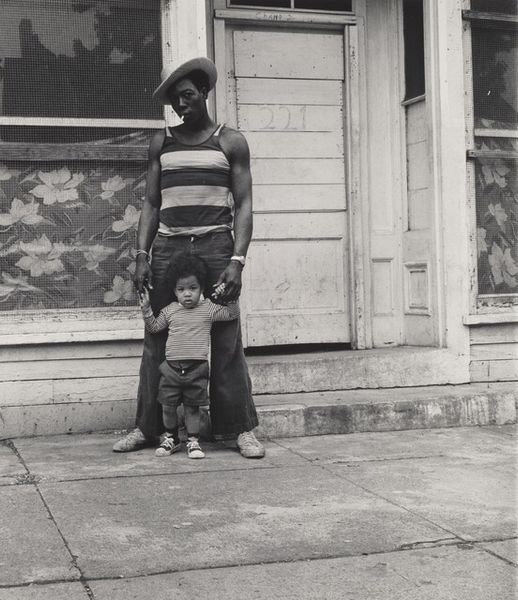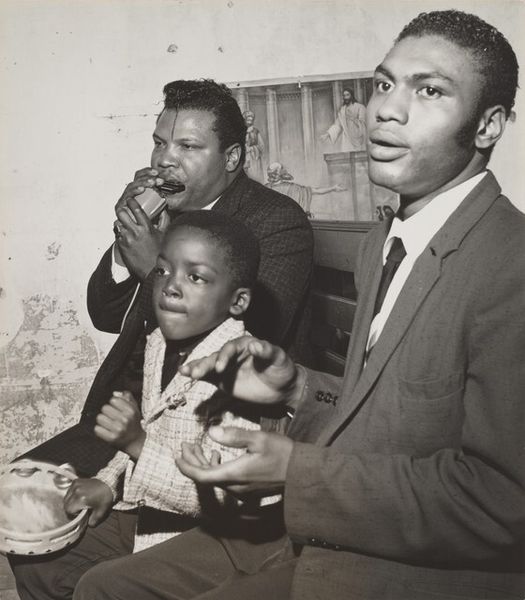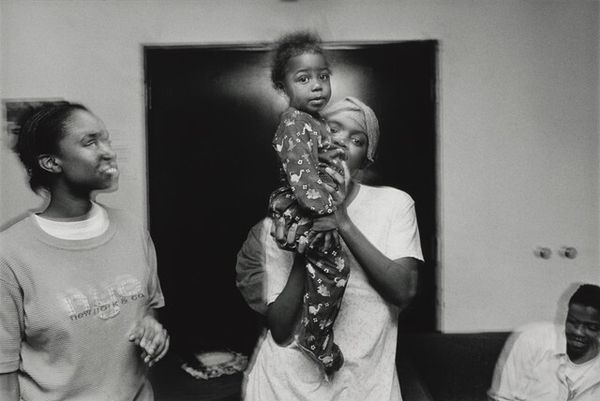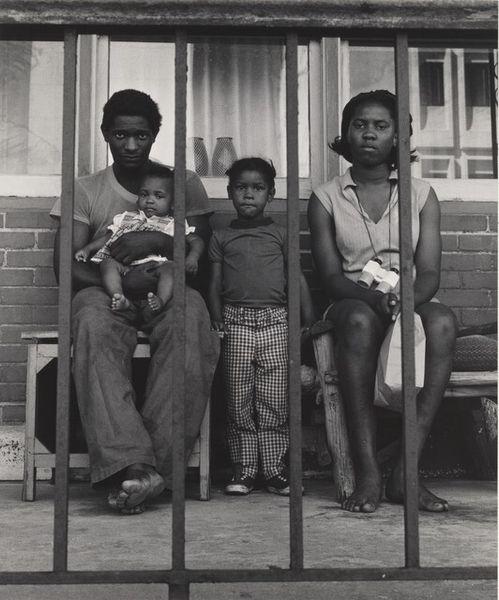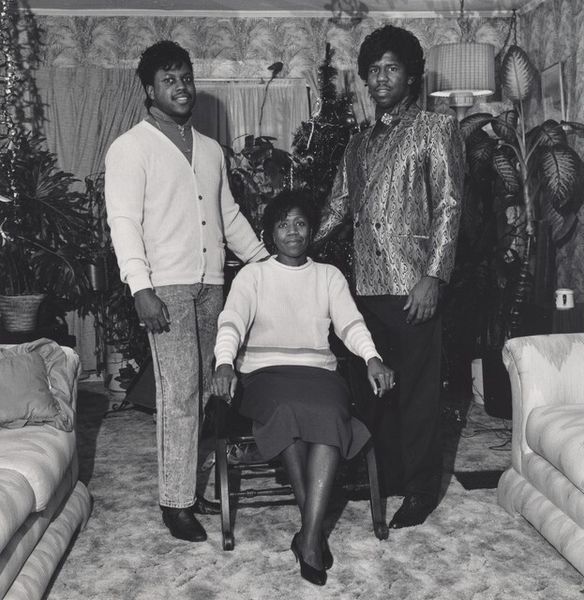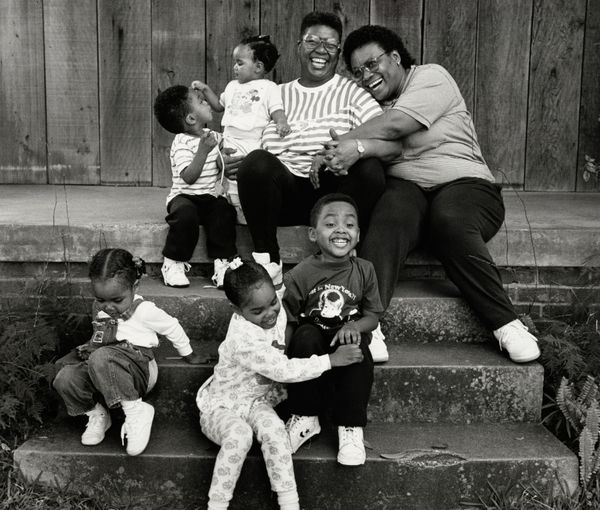
#
black and white photography
#
photo restoration
#
cool tone monochrome
#
black and white format
#
historical photography
#
black and white theme
#
black and white
#
monochrome photography
#
photographic element
#
monochrome
Dimensions: image: 18 x 17.1 cm (7 1/16 x 6 3/4 in.) sheet: 25.1 x 20.2 cm (9 7/8 x 7 15/16 in.)
Copyright: National Gallery of Art: CC0 1.0
Editor: Here we have Milton Rogovin’s "Atlas Steel Casting (Working People series)," taken between 1978 and 1979. The black and white photograph depicts a family in their home, and it has such an intimate and powerful feeling. What do you see when you look at this photograph? Curator: I'm immediately drawn to the details within the space – the clothing, the furnishings, the pictures on the wall. They speak volumes about the material conditions and the lived experience of this family. Notice how Rogovin’s series focused on "working people"; this isn’t just a portrait; it’s a document of labor, a commentary on the social structures impacting this family's life. Consider how the photograph itself, the paper, the ink, becomes a material testament to their existence. Editor: So, it's less about capturing a perfect image and more about revealing the reality of their lives? Curator: Exactly. Think about the act of making the photograph – the labor involved, the economic factors that allowed this image to even exist. What stories do you imagine those "PENCILS" overalls tell? How much does something like that, mass produced or unique, communicate about larger systems of commerce and labor? Editor: I never thought of analyzing an artwork like that before, focusing on such details… So by considering all these different material aspects, we are understanding more about the historical, economic and social conditions in which this image was created, right? Curator: Precisely. We consider art not as some object divorced from the world but deeply embedded in material reality. Everything within this frame and the photograph itself speaks to labor and consumption. Editor: I see that shift now! The image transforms into an artifact loaded with information. Thanks for opening my eyes to this perspective. Curator: Absolutely! Seeing art as part of the world, rather than separate, enriches its meaning and helps us think more critically.
Comments
No comments
Be the first to comment and join the conversation on the ultimate creative platform.
